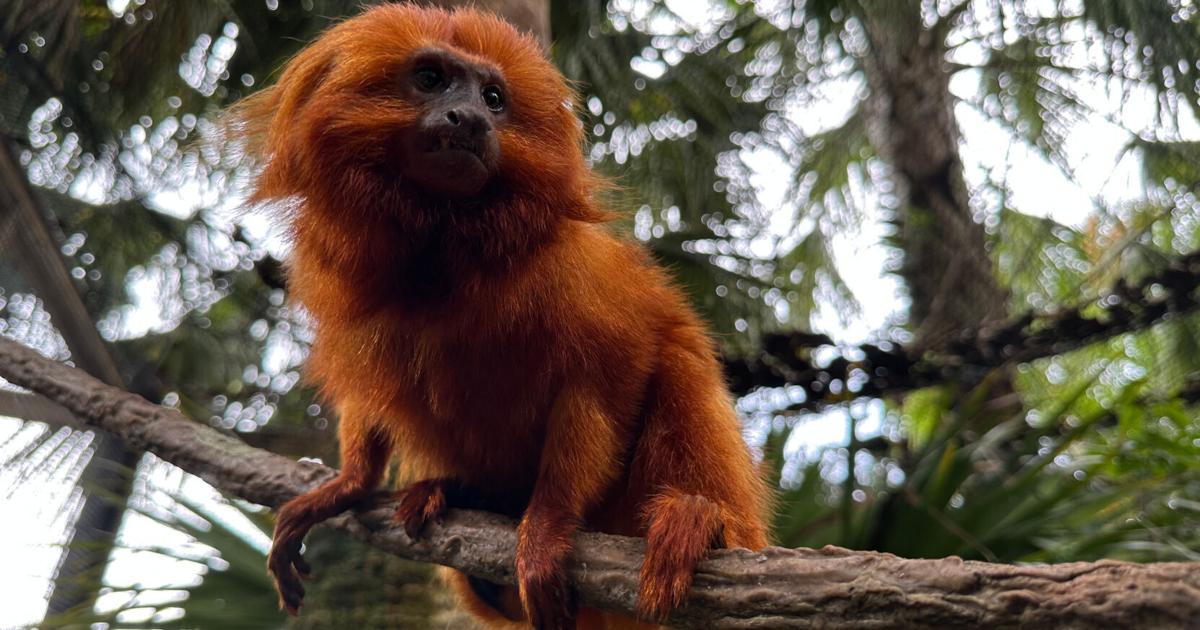In a remarkable development, the Palm Beach Zoo and Conservation Society in West Palm Beach, Florida, has unveiled a new habitat where golden lion tamarins and Hoffman’s two-toed sloths coexist. This unique environment, which opened in late August 2023, aims to mimic the natural forests of South America, providing ample trees and climbing structures for both species.
The golden lion tamarins, easily recognizable by their vibrant orange fur, are known for their playful nature, often seen navigating the treetops. In contrast, the sloths, which tend to be more sedentary, find comfort hanging from branches. Devin Clarke, a senior supervisor at the zoo, remarked on this unlikely pairing: “Maybe the golden tamarins think of the sloth as more furniture because they don’t really do too much. They’re more sedentary.” This arrangement allows the tamarins to frolic freely while the sloths maintain their relaxed lifestyle.
The design of the habitat promotes interaction between the two species. With a network of vines, ropes, and tunnels, the space encourages exploration and offers visitors a closer view of these animals. Clarke emphasized the importance of this interaction, saying, “Just being able to see them up close and personal is really a way to inspire connection.” He believes that fostering such connections may motivate visitors to consider their role in supporting wildlife conservation efforts, particularly for endangered species like the golden lion tamarin.
Once on the brink of extinction, the population of golden lion tamarins has rebounded from fewer than 200 individuals in the wild during the 1970s to over 5,000 as of 2022, thanks in part to collaborative efforts from around 40 accredited zoos through the Association of Zoos and Aquariums. Clarke noted that the previous habitat was smaller and less accommodating. “We wanted to be able to give them a better well-being, so enhancing their lives with enrichment, with space, so they can act a little bit more natural,” he explained.
Conservation is central to the Palm Beach Zoo’s mission, and the new habitat reflects this focus by incorporating native Florida plants. Clarke added, “Planting those Florida native plants within that habitat is a great way to highlight something we can do at our own homes.” He encouraged even apartment dwellers to consider adding potted native plants to help revitalize local ecosystems.
The zoo’s president and CEO, Margo McKnight, expressed optimism for the educational potential of the new habitat. “We hope to foster a love for wildlife in wild places, including our own backyards,” she stated. McKnight aims for every visitor to leave feeling inspired to contribute positively to their communities and become “wildlife heroes.”
With this innovative habitat, the Palm Beach Zoo not only enhances the lives of its animal residents but also plays a crucial role in educating the public about wildlife conservation and the importance of protecting natural habitats.
